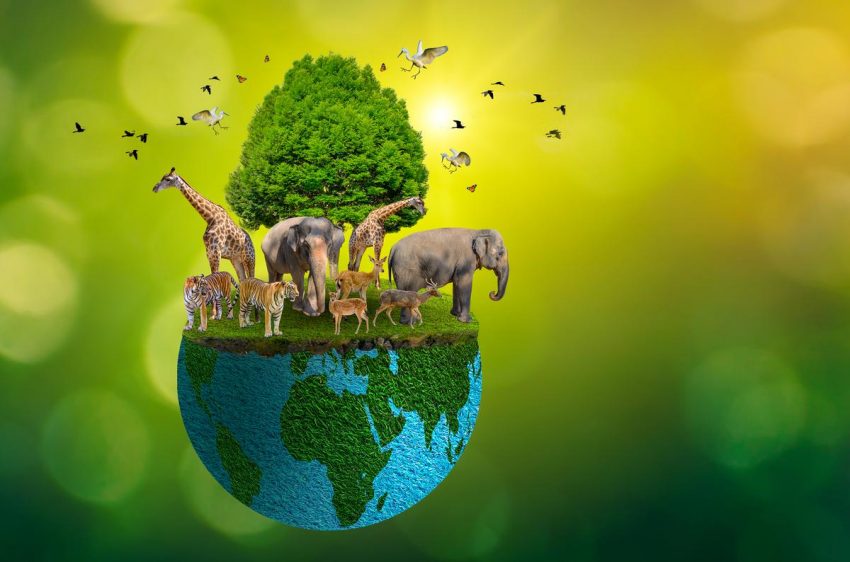Not everyone who is concerned about endangered species, and would like to help protect threatened wildlife, has the opportunity to get out in the field, get their boots muddy, and do something about it. But even if you’re unable to participate in hands-on conservation work, you can still contribute money to a conservation organization. Read on to learn about the world’s most reputable wildlife conservation groups — one requirement for inclusion being that these organizations spend at least 80 percent of the money they raise on actual fieldwork, rather than administration and fundraising.
The Nature Conservancy
The Nature Conservancy works with local communities, businesses, and individuals to protect over 125 million acres of land around the globe. The goal of this organization is to preserve entire wildlife communities along with their rich species diversity, a holistic approach that’s vital to the health of our planet. One of the Nature Conservancy’s more innovative conservation approaches is debt-for-nature swaps, which maintain the biodiversity of economically developing countries in exchange for forgiveness of their debts.
The World Wildlife Fund
The World Wildlife Fund works with multilateral and bilateral agencies to promote sustainable development in nearly 100 countries. Its aims are threefold — to protect natural ecosystems and wild populations, to minimize pollution, and to promote efficient, sustainable use of natural resources. The WWF focuses its efforts on multiple levels, starting with specific wildlife habitats and local communities and expanding upward to governments and global networks of non-government organizations. This organization’s official mascot is the Giant Panda, probably the world’s most famous near-extinct mammal.
The Natural Resources Defense Council
The Natural Resources Defense Council is an environmental action organization consisting of over 700 lawyers, scientists, and other professionals that commands a membership of more than three million people and online activists worldwide. The NRDC makes use of local laws, scientific research, and its wide network of members and activists to protect wildlife and habitats around the globe. Some of the issues the NRDC focuses on include curbing global warming, encouraging clean energy, preserving wildlands and wetlands, restoring ocean habitats, stopping the spread of toxic chemicals, and working toward greener living in China.
The Wildlife Conservation Society
The Wildlife Conservation Society supports zoos and aquariums, while also promoting environmental education and conservation of wild populations and habitats. Its efforts are focused on a select group of flagship animals, including apes, big cats, elephants, whales, and sharks, in addition to other “global priority species.” The WCS was established in 1895 as the New York Zoological Society, when its mission was, and still is, to promote wildlife protection, foster the study of zoology, and create a top-notch zoo. Today, there are five Wildlife Conservation Zoos, all in New York: the Bronx Zoo, the Central Park Zoo, the Queens Zoo, the Prospect Park Zoo, and the New York Aquarium at Coney Island.

Oceana
The largest non-profit organization devoted exclusively to the world’s oceans, Oceana works to shield fish, marine mammals, and other aquatic life from the effects of pollution and industrial fishing. This organization has launched a Responsible Fishing Campaign aimed at preventing overfishing, as well as individual initiatives to protect sharks and sea turtles, and it closely monitors the long-lasting effects of the 2010 Deepwater Horizon oil spill on coastal habitats in the Gulf of Mexico. Unlike some other wildlife groups, Oceana only focuses on a select handful of campaigns at any given time, better enabling it to achieve specific, measurable outcomes.
Conservation International
With its broad team of scientists and policy experts, Conservation International aims to help stabilize the global climate, protect the world’s supplies of fresh water, and ensure overall human well-being in ecologically threatened areas, largely by working with indigenous peoples and various non-governmental organizations. One of this organization’s most impressive calling cards is its ongoing Biodiversity Hotspots project: identifying and protecting the ecosystems on our planet that exhibit both the richest diversity of plant and animal life and the greatest susceptibility to human encroachment and destruction.
The Jane Goodall Institute
The chimpanzees of Africa share 99 percent of their genome with human beings, which is why their brutal treatment at the hands of “civilization” is a cause for shame. The Jane Goodall Institute, founded by the famous naturalist, works to protect chimpanzees, great apes, and other primates (in Africa and elsewhere) by funding sanctuaries, fighting illegal trafficking, and educating the public. The JGI also encourages efforts to provide health care and free education for girls in African villages and promotes “sustainable livelihoods” in rural and backward areas via investment and community-managed micro-credit programs.

